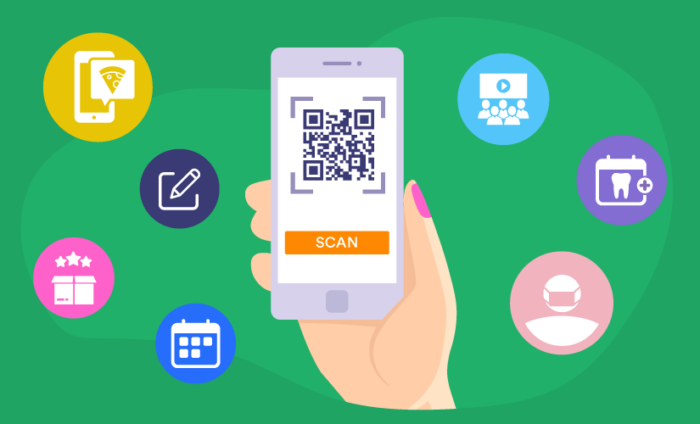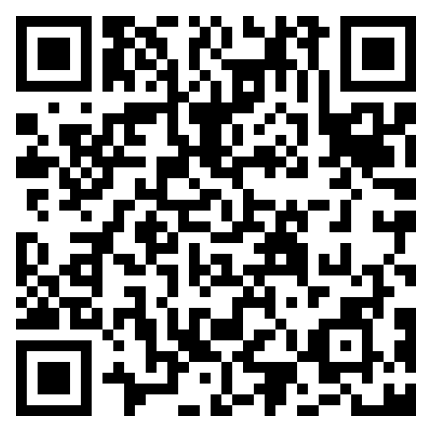Once thought of as a thing of the past, QR codes are making a comeback by helping businesses reopen during the COVID-19 pandemic.
QR codes are complex matrix codes that can hold more data than your average barcode. They’re easy to set up, use, and incorporate into your business. Better yet, they help organizations go paperless and contactless. Here’s a video that covers the basics of QR codes.
With Jotform it’s easy to create a QR code! After you build a form or customize a template, all you need to do is publish your form, click the Share Options button under the Quick Share tab in the Form Builder, and choose Download QR code. You’ll be able to share your QR code via link, download it as an image, or embed it onto your website. Here’s a short blog post with more information.
Alright, now let’s talk about seven ways you can use Jotform’s QR code feature to help your business reopen quickly and effectively.
Pro Tip
Discover how to make the most of QR codes for your projects. Easily create custom codes with the QR Code Generator.
1. COVID screening
As businesses begin to reopen, they’ve put in place COVID screening measures to make sure that employees and customers stay safe.
QR codes come in handy for screening employees or customers before they enter a business or workplace. Organizations can provide a QR code at the reception desk. People use their mobile device to scan the QR code, which redirects them to a questionnaire where they can provide information on the current state of their health.
You can use QR codes this way for just about any business that has foot traffic, such as co-working spaces, malls, gyms, conferences, and even offices with large teams.
2. Restaurant menus
Restaurants are slowly reopening for indoor and outdoor dining, which means they need to maintain social distancing as much as possible.
To reduce contact, restaurant staff can place a QR code on a table in lieu of a physical menu. People can scan the code to see what food and beverages the restaurant offers.
From there, customers can choose the items they’d like to purchase and pay for them, all through Jotform. Once a submission is received, the restaurant staff will be automatically notified, and the only in-person contact left is bringing out the food for diners to enjoy!
Additionally, if restaurants aren’t able to reopen, they can post their menu as a QR code on their website so customers can go through the same process to place an order. Instead of serving the food at a table, the restaurant can have the order ready for curbside pickup.
3. Registrations
Most activities, such as conferences, concerts, contests, webinars, and many more, require some type of registration.
Traditionally, organizations have used pen and paper to collect attendee information, which is a hassle. But QR codes make gathering registrations a whole lot easier.
You can include QR codes for registration in email marketing campaigns, on pieces of direct mail, and embedded onto websites. People interested in registering can easily scan the QR code and fill out the registration form from their mobile device.
All of the attendee information will be automatically stored in your Jotform account, so it’s easy to check in on submissions, keep tabs on registration numbers, and follow up when need be.
4. Customer feedback
Customer feedback and customer listening are both incredibly important for companies to understand how people perceive their products and services.
Before COVID, businesses like restaurants, coffee shops, and gyms would ask for feedback in person or ask customers to fill out a comment card to share their thoughts and opinions.
Since it’s not safe to do this anymore, businesses can now use QR codes to ask for feedback. For example, staff can place QR codes around a place of business as a framed image on a wall or as a digital image on a device like an iPad.
Including QR codes at a business helps remind customers to give their feedback in an easy and safe way.
5. Reservations
As businesses reopen, there are social distancing guidelines to keep in mind so there aren’t too many people in one place.
That’s why businesses, such as gyms, public swimming pools, movie theaters, and more, are asking people to register in advance to ensure a safe social distance.
QR codes can help with this by allowing people to reserve their spot from the comfort of their homes. Once someone scans the QR code from their mobile device, they will be redirected to an online booking form where they can submit their name, email, and the date and time they’d like to reserve.
You can even include a payment processor integration to put a deposit down or pay for the reservation in full.
6. Appointment requests
Similar to booking a reservation, appointments in our “new normal” require some planning since there will be limited capacity.
This is especially true for personal care services, such as hair and nail salons, massage therapists, and nutritionists. The same goes for doctors and dentist offices.
QR codes are a great resource for these businesses. Personal care services and medical offices can include a QR code on their websites or at their in-person locations, so clients can scan the code and make their next appointment in advance.
You can include the Jotform appointment field in your forms to make scheduling even easier. Better yet, Jotform offers features that help with HIPAA compliance, so your organization can collect and safeguard any sensitive client or patient information.
7. Applications
Last, QR codes are excellent for property rentals, volunteering, and scholarship and job applications.
Before the pandemic, many organizations and educational institutions used paper applications to collect information, which was tedious and time-consuming.
It’s never been easier to create an application form with Jotform and publish it as a QR code. Like some of the examples mentioned above, it’s completely up to your organization to choose where to include the QR code — it can be as simple as displaying it on a screen when someone enters an office or including it on your website.
QR codes make for a truly effortless paperless and contactless solution, and help decrease the spread of the coronavirus.
Pro Tip
Don’t forget to publish your form to get a downloadable QR code.
Now that you have a few ideas about how to use QR codes, be sure to try them out with your online forms today.




























































Send Comment:
2 Comments:
More than a year ago
verdaderamente excelente el trabajo que están haciendo felicidades
More than a year ago
Excellent